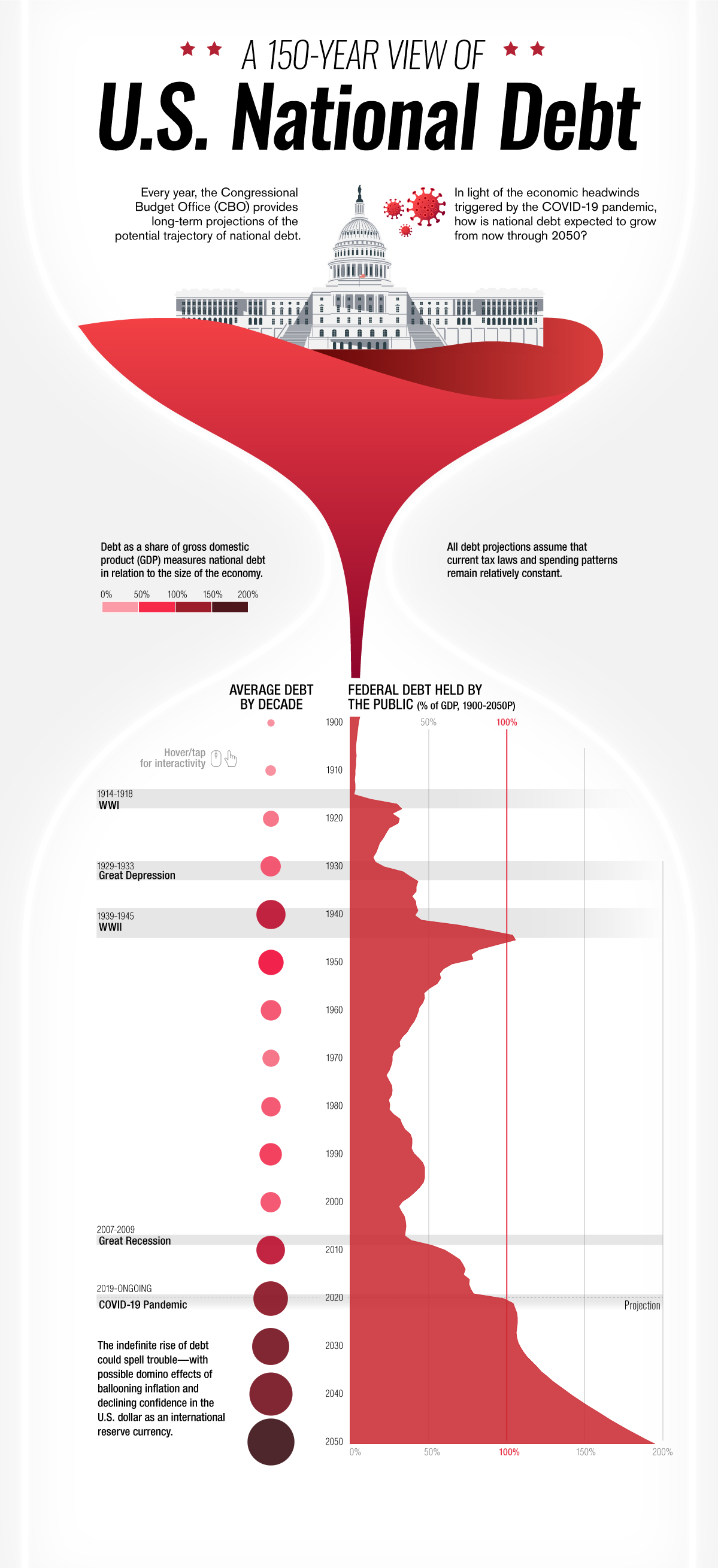Interactive Visualizations
The U.S. Cities with the Best and Worst Internet Access
In many ways, the Internet has become an absolute necessity in our daily lives. For many over the past year, working from home has simply become part of the daily routine. Stanford research has shown that as of June 2020, 42% of the labor force in the United States was working at home amidst the coronavirus pandemic.
From Theater Seat Store, this interactive map analyzes which cities across the United States are the most and least connected. For the convenience of the reader, this interactive look allows the user to view the data as a map or a list.
Click below to zoom

These are the 25 cities across America that have the highest percentages of homes that have internet access.
- Johns Creek, GA: 100%
- South Jordan, UT: 99.20%
- Flower Mound, TX: 99.20%
- Fishers, IN: 99.00%
- Naperville, IL: 99.00%
- Bellevue, WA: 99.00%
- Chino Hills, CA: 98.70%
- Wesley Chapel, FL: 98.50%
- Centreville, VA: 98.50%
- San Ramon, CA: 98.40%
- Centennial, CO: 98.40%
- The Hammocks, FL: 98.30%
- Maple Grove, MN: 98.30%
- Hillsboro, OR: 98.30%
- Cary, NC: 98.30%
- San Clemente, CA: 98.20%
- Yorba Linda, CA: 98.20%
- Redmond, WA: 98.20%
- Pleasanton, CA: 98.20%
- Highlands Ranch, CO: 98.20%
- College Station, TX: 98.20%
- League City, TX: 98.20%
- Gilbert, AZ: 98.10%
- Lehi, UT: 98.00%
- Redondo Beach, CA: 97.90%
Here are 25 worst cities in the United States with the highest percentage of households without internet access.
- Harlingen, TX: 30.20%
- Gary, Indiana: 29.30%
- Pharr, TX: 28.50%
- Cleveland, OH: 27.30%
- Miami, FL: 25.60%
- Shreveport, LA: 25.50%
- Flint, MI: 24.70%
- East Los Angeles, CA: 24.70%
- Bossier City, LA: 24.70%
- Decatur, IL: 24.50%
- Albany, GA: 24.10%
- Lawrence, MA: 23.90%
- Newark, NJ: 23.70%
- Trenton, NJ: 23.70%
- Camden, NJ: 23.50%
- Lynwood, CA: 23.10%
- Hialeah, FL: 22.90%
- Memphis, TN: 22.80%
- Reading, PA: 21.60%
- Mount Vernon, NY: 21.10%
- St. Joseph, MI: 21.00%
- Waterbury, CT: 20.80%
- New Rochelle, NY: 20.70%
- Fort Smith, AK: 20.50%
- Fall River, MA: 20.30%
Interactive Visualizations
Get the Inside Scoop on the Latest Ice Cream Trends in America
It is August and we have dreamy, creamy ice cream on the mind! The team at CivicScience has scooped up data on the ice cream consumption habits of Americans. According to their research, 65% of U.S. adults consume ice cream at least once monthly, with over a third enjoying a sweet frozen treat monthly. 46% report having at least two different types of ice cream or other frozen treats at home currently – I can attest to that personally with mint chip ice cream and coconut popsicles! Let’s grab a spoon and dig into this delicious data:
As a chocolate lover, I was surprised to discover that vanilla holds a 51% to 49% majority among American ice cream eaters. Gen Z and hybrid workers lead the charge for vanilla, so I wonder if trends will shift towards vanilla more and more in the future. I can’t say I cone-done that! What about matcha ice cream, the relative newcomer to the U.S. creamery scene? 17% have tried it, 13% intend to try it, and a whopping 70% are not interested at all! I personally enjoy the herbal, earthy sweetness of matcha ice cream, but I have to be in a certain mood to actually buy it. Dairy Queen takes the crown for the favorite place to get ice cream with 23% out of the chain locations. 38% chose other, so that gives me hope that local ice cream shops are thriving! Non-dairy ice cream has slowly been trending up from 38% in 2019 to 41% now, with the pandemic sprinkling some interest. All ice cream is welcome here – except butter pecan!
Interactive Visualizations
Which States Have the Most (and Least) State and National Park Coverage?
You might be surprised that the states with the most land don’t necessarily have the most national parks or state parks. This interactive map and visualization from Playground Equipment gives you a rather interesting look at not only which states have the most and least amount of national parks and state parks, but which states have the highest and lowest percentage of land coverage for these parks across their states.
Click below to zoom
While it may not be the biggest state in terms of size, it’s actually Hawaii that can claim being the state with the highest percentage of national park and state park coverage. Of Hawaii’s 4.1 million acres across the state, 9.41% are covered by either national parts of state parks. There are 50 state parks in Hawaii that span 30,000 acres collectively, with the state’s two national parks covering up 358,870 acres of land.
In comparison, Kansas has the lowest percentage of their overall land dedicated to state parks or national parks. In Kansas, only 0.06% of the state’s 52.6 million acres are covered by state parks or national parks, despite the state being home to 26 state parks. There are zero national parks in Kansas.
California, New York and Washington are the only three states across the country that have more than 200 national parks. Of the 3,729 state parks across the United States, 1,083 (29%) of them are within California, New York, Washington, Oregon and Florida. These are the ten states across America that have the most state parks.
- California: 270
- New York: 215
- Washington: 212
- Oregon: 195
- Florida: 191
- Massachusetts: 154
- Illinois: 142
- Pennsylvania: 121
- Alaska: 119
- Connecticut: 109
California also has more national parks than any other state. Nine of the 61 national parks (14.75%) are located across 6.3 million acres in California. These are the states that are home to the most national parks across the United States.
- California: 9
- Alaska: 8
- Utah: 5
- Colorado: 4
- Arizona, Florida and Washington (tied): 3
Finance Visualizations
150 Years of U.S. National Debt in One Chart
Today, the national debt of the United States of America stands at an eye-watering 28 trillion dollars and rising. The CARES Act of 2020 and other stimulus bills due to COVID have added massive increases in a short period of time. To see how we got to this place to being with Visual Capitalist has this great interactive timeline of US debt over the past 150 years.
Click below to use the interactive version
Starting in the year 1900 only 4.8% of the total national debt was held by the public. After World War I in 1910 that percentage jumped to 10. In 1920 following the Great Depression that number doubled to 22.9%. Ten years later that number would be in the billions, 16 billion to be exact with President Roosevelt’s New Deal in 1930. World War II would see this number jump to 40 billion or 75.1% of the GDP. The Korean War of 1950 would add hundreds of billions to the debt clock in only ten years bringing the total in 1950 to $257 billion but bringing the GDP down to 56.8%. The next big increase would come in 1980 when president Reagan introduced his tax cuts causing the gross debt to jump to over 900 billion. Ten years later it would see another massive jump to over $3,233 billion dollars with the Gulf War. Thirty years later the COVID-19 pandemic caused the average debt held by the public to sky rocket to 105.6 percent in 2020 , over $27,748 billion dollars. By 2050 it is estimated that the percentage of debt held by the public will be almost 200 percent.
-

 Business Visualizations9 months ago
Business Visualizations9 months agoEverything Owned by Apple
-
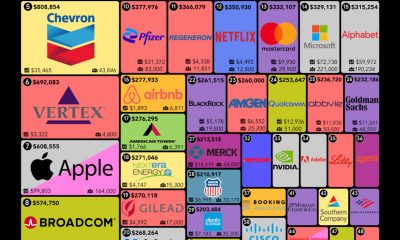
 Business Visualizations8 months ago
Business Visualizations8 months agoAmerica’s Most Valuable Companies Ranked by Profit per Employee
-

 Business Visualizations2 months ago
Business Visualizations2 months agoThe Biggest Employers by Industry
-
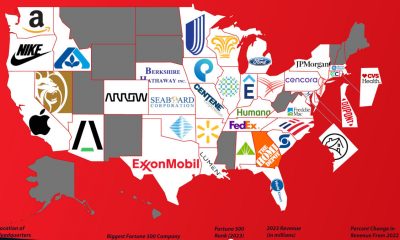
 Business Visualizations4 months ago
Business Visualizations4 months agoThe Biggest Fortune 500 Company in Every State
-
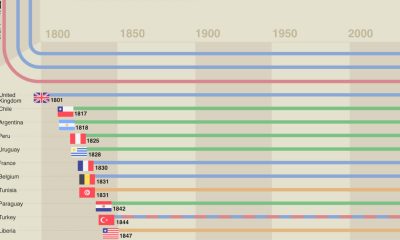
 Timelines1 year ago
Timelines1 year agoA History of the Oldest Flags in the World
-
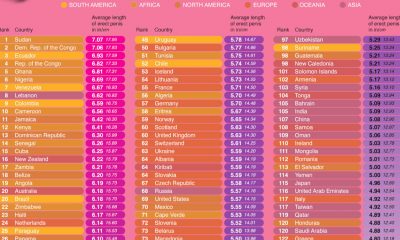
 Maps1 year ago
Maps1 year agoPenis Lengths Around the World
-

 Business Visualizations2 years ago
Business Visualizations2 years agoHow Many Companies Does Elon Musk Own?
-
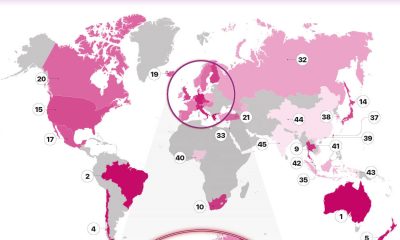
 Charts2 years ago
Charts2 years agoThe Most Promiscuous Countries in the World


